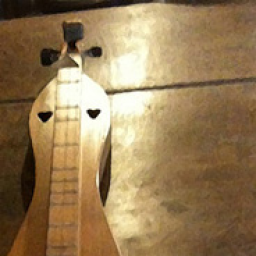Bryan Fridlund:
Dusty, I know picks are a personal choice;however, I would like to know more about the specific Dunlop Tortex pick you use? Which "model" is it? Any help would be appreciate as I am always trying to find a pick I like better than the one I have.
Thank you. Bryan
Bryan, sorry I couldn't get back to you earlier; I was out-of-town on a business trip.
You are right that picks are a personal choice and what works for one person may not work for another. When I first got a dulcimer I bought a bunch of those triangular Herdim picks but didn't like them at all (too thin, too big, too pointy). So I eventually went back to the Dunlop Tortex picks that I settled on after years of guitar playing. They come in various shapes and thicknesses. I prefer the standard shape. I use the blue 1.0 mm picks when I've been playing a lot but sometimes use the green .88 mm picks when I haven't played in a while. When I first started on the dulcimer I think I used a lighter pick, but as I've gotten more comfortable with my technique I've moved to slightly heavier picks.

Part of the trick to my style of play--which is admittedly a guitar style and not a traditional dulcimer style--is to hold the pick between my thumb and the side of my index finger such that only the very tip of the pick sticks out. That way a lot of the pick is in contact with my skin, making it steadier in my hand. If I am only strumming and not playing single notes, I might let more of the pick stick out, but to play careful single-note runs as in fiddle tunes, I find I need the control that comes with allowing only a bit of the pick to stick out.
Heavier picks require a softer, more controlled touch, so most beginners have trouble with them. But they are also more precise. Just imagine the pick as it hits a string. The very tip of the pick will bend, so that it strikes the note slightly after you have made the picking motion with your hand. The thinner the pick the more the delay between your intended strum and the sounding of the note, since the pick bends more. So not only does the note sound after the beat, but the snap-back of that bend produces a more pronounced pick clack. For these reasons I prefer the thicker picks, in particular the blue and green versions.
Play around with this stuff and with different picks for different styles of play. I would never tell anyone to play like I do unless you purposefully want to play in a guitar style. I did a flatpicking workshop with FOTMD member Erin Mae (formerly Rogers) and she dumped a whole bunch of different picks out for us to play with, including one made of genuine turtle shell and one that was one of the $75 BlueChip picks. Each one had a different feel and a different tone. But at one point she did admit that before she got serious enough to spend on those expensive picks, the Dunlop Tortex was also her choice (sorry, I don't know what style or thickness she preferred).
Of course, if you get tired of all this, you can always just play with your bare fingers!
updated by @dusty: 03/18/16 04:12:09PM





 ).
).
